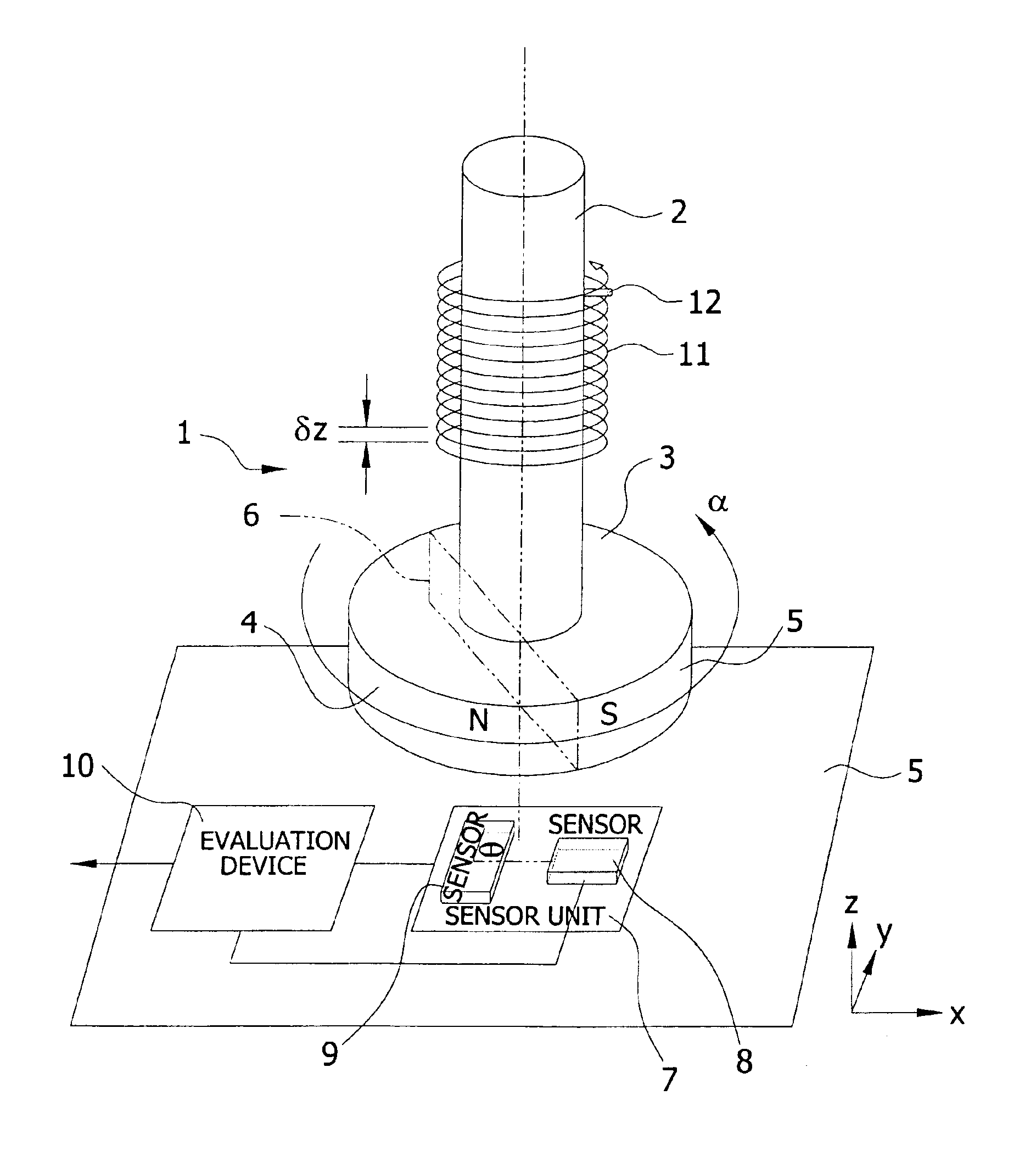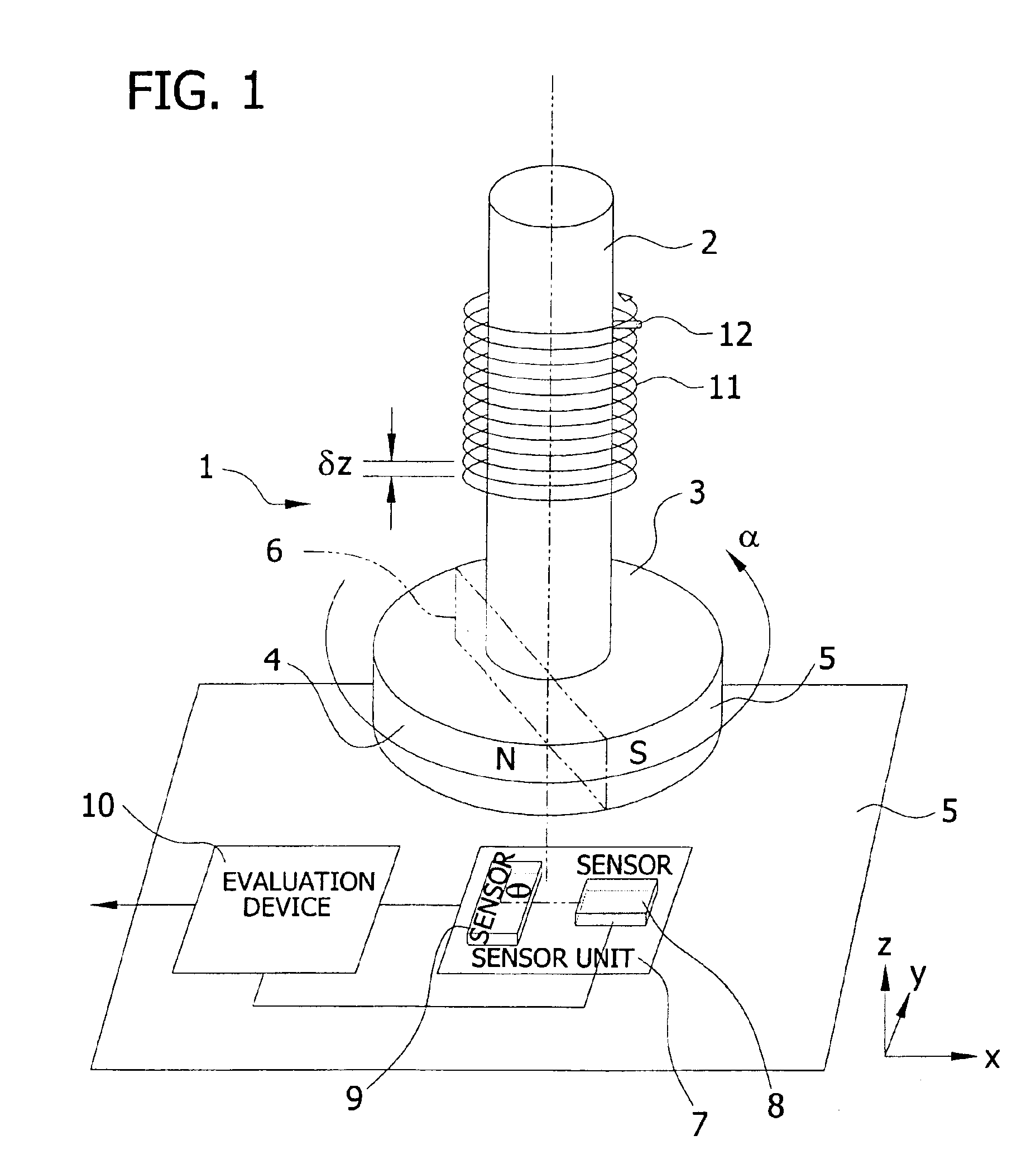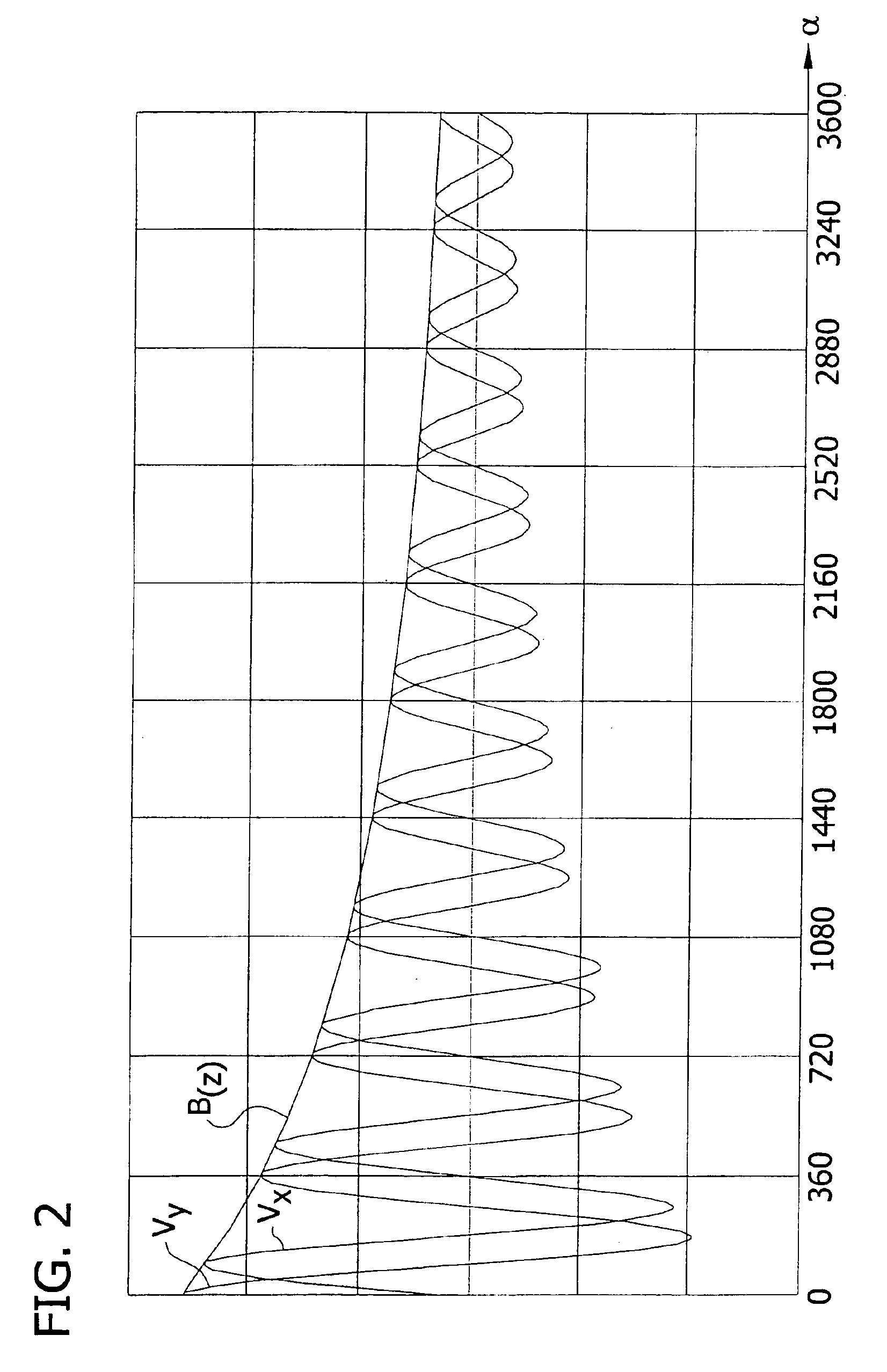Angle of rotation sensor
a technology of rotation sensor and angle, applied in the field of position sensor, can solve the problems of insufficient mechanical complexity of gears, insufficient for many application purposes, and inability to detect only an angular range of 0° to 360°, and achieve the effect of high resolving power
- Summary
- Abstract
- Description
- Claims
- Application Information
AI Technical Summary
Benefits of technology
Problems solved by technology
Method used
Image
Examples
Embodiment Construction
[0024]This application claims priority of German application DE 103 34 869.7, filed Jul. 29, 2003, the entire disclosure of which is explicitly incorporated by reference.
[0025]The angle of rotation sensor of FIG. 1 is designated in its entirety by the reference character 1. A magnet 3, which has a north pole 4 and a south pole 5, which are separated by an imaginary plane 6, which is parallel to the axis of rotation of the shaft 2, is mounted on a rotary shaft 2, whose angle of rotation a is to be measured. Opposite the magnet 3 there is a sensor unit 7, which contains two magnetic field-sensitive sensors 8 and 9, whose main directions of sensitivity are perpendicular to each other and lie in a plane (x-, y-plane) that is perpendicular to the center axis of the shaft 2. However, it should be mentioned that the two sensors 8 and 9 need not be perpendicular to each other in every case, but can also be aligned at a different angle φ to each other. The sensors 7 and 8 can lie next to eac...
PUM
 Login to View More
Login to View More Abstract
Description
Claims
Application Information
 Login to View More
Login to View More - R&D
- Intellectual Property
- Life Sciences
- Materials
- Tech Scout
- Unparalleled Data Quality
- Higher Quality Content
- 60% Fewer Hallucinations
Browse by: Latest US Patents, China's latest patents, Technical Efficacy Thesaurus, Application Domain, Technology Topic, Popular Technical Reports.
© 2025 PatSnap. All rights reserved.Legal|Privacy policy|Modern Slavery Act Transparency Statement|Sitemap|About US| Contact US: help@patsnap.com



